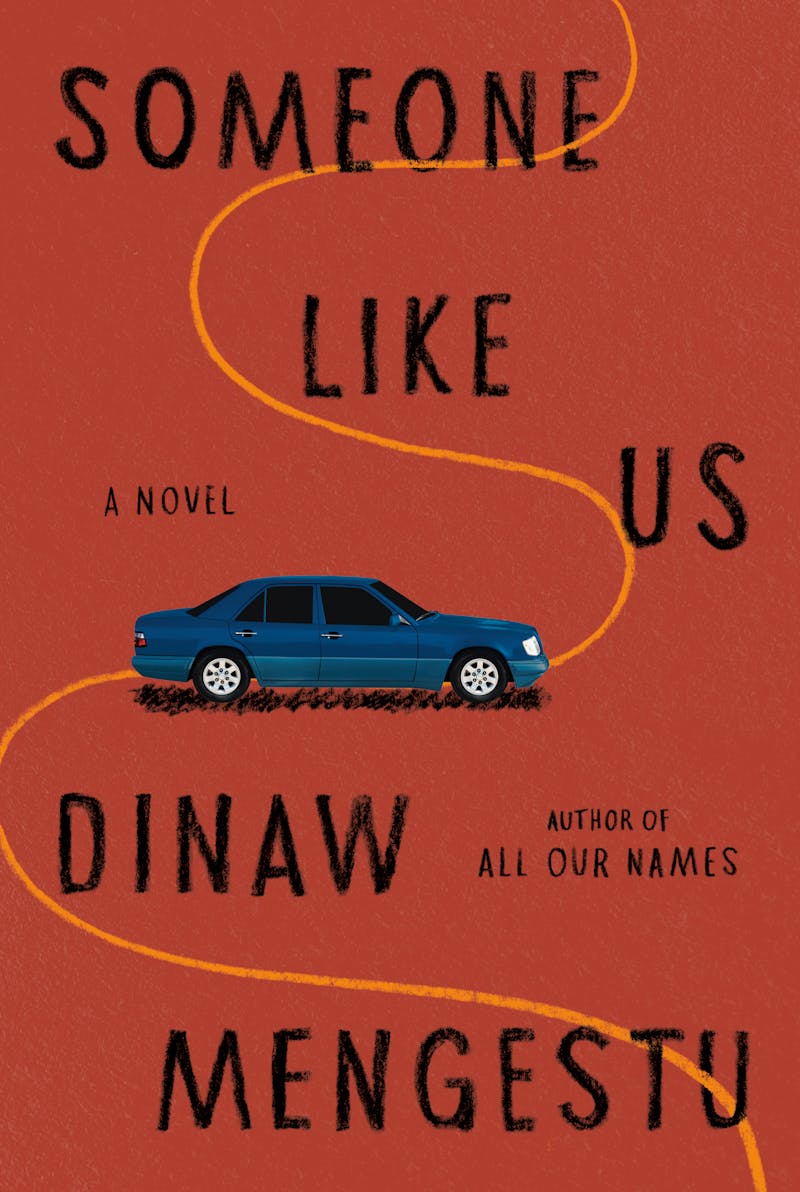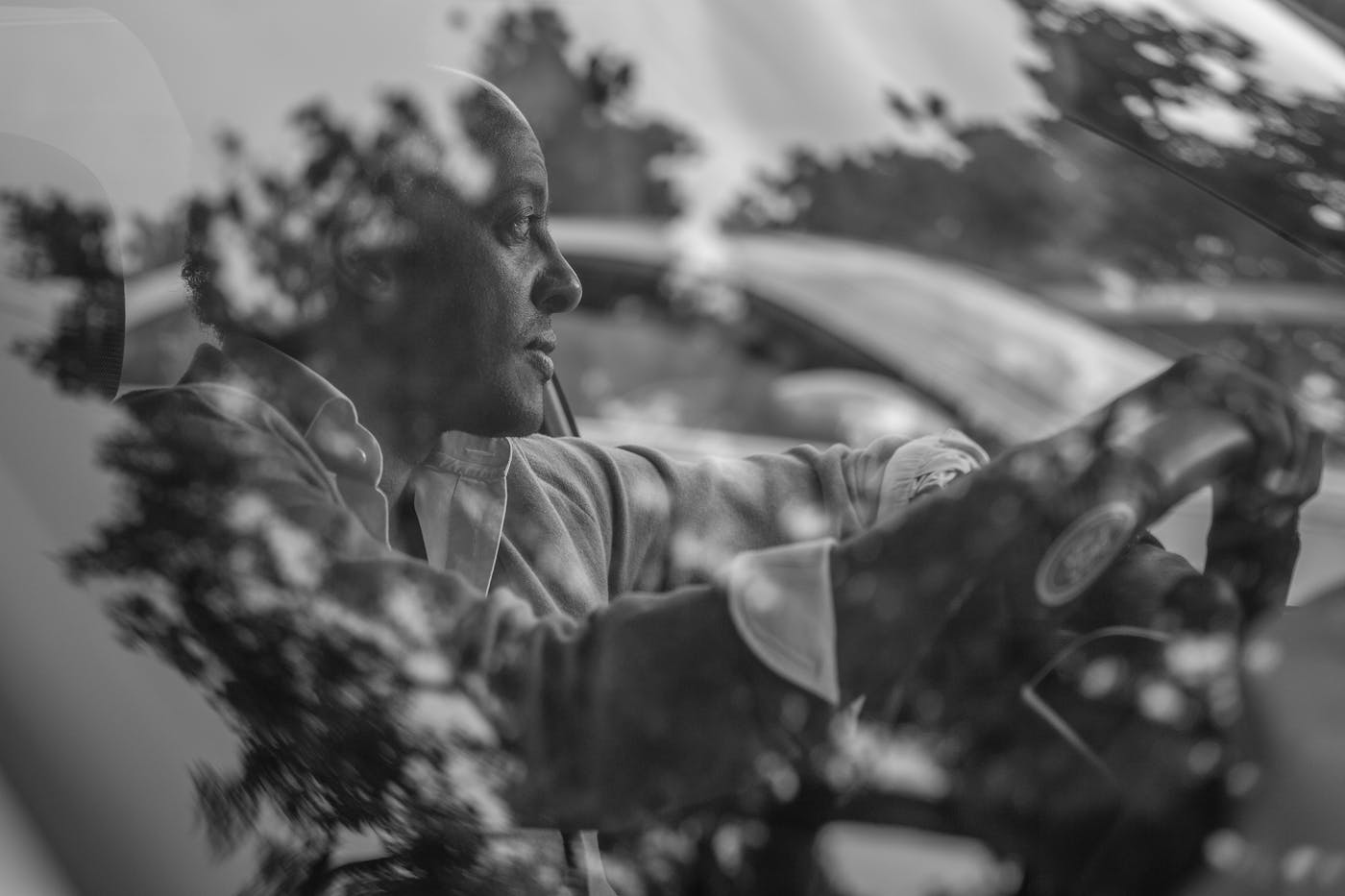Grief and Dislocation in the D.C. Suburbs
Imagine a story—a novel; a movie; a show—set in Washington, D.C. Maybe you see marble hallways, swinging briefcases, men in suits. Maybe you see Julia Child’s house in Georgetown. Maybe you see a hotel bar, cars loitering outside embassies, the Capitol or one of the many brutalist agency headquarters along the Mall, or maybe you just see the Mall. All these settings belong to Washington: nation’s capital, hub of international politicking, hotbed of American symbolism. But not much fiction of any sort goes beyond Washington to D.C.’s huge network of suburbs in Maryland and Virginia, beyond politics to the real population of a city that is shaped and overshadowed by the federal government, but that often looks, sounds, and acts nothing like the people ruling on Capitol Hill.D.C.’s greatest writer is Edward P. Jones, whose story collections Lost in the City and All Aunt Hagar’s Children contain beautifully rigorous tales of ordinary, working Washingtonians who are so deeply rooted in the city that their memories turn into maps. Jones’s characters are nearly all Black, with ancestry in the U.S. South—which, until the early 2010s, was true of a majority of D.C.’s inhabitants. But it is also a heavily international city, with, among many other immigrant communities, one of the biggest Ethiopian diasporas in the world. As a Washingtonian, I would say you can’t understand my hometown without reading Jones, nor can you understand it without reading Dinaw Mengestu’s 2007 debut, The Beautiful Things That Heaven Bears, a piercing story of dislocation set in a then rapidly gentrifying section of Northwest D.C.Mengestu isn’t quite as geographically precise as Jones, but he gets close. His protagonist, an Ethiopian immigrant named Sepha Stephanos, owns a small, struggling grocery store on P Street, just beside Logan Circle. Stephanos has opinions about his street and circle that go beyond the feelings anyone might have about their neighborhood: Moving there and opening his store, after years working at a hotel and living in the Maryland suburbs with his uncle, were “the first real decisions I had made on my own since coming to this country. I loved them.” Although the novel is full of heartbreak, that love animates it, standing between Stephanos and the void of displacement and grief.Mengestu, who grew up near Chicago, left D.C. behind in his second and third novels. But the city reappears—as does Stephanos—in his fourth, Someone Like Us, which is set in the “sprawling empire of the D.C. suburbs.” Years have gone by, and Stephanos is now a minor character, the quietly empathetic proprietor of a halfway house in Northeast D.C. Mamush, the novel’s narrator, isn’t a resident, although he is an alcoholic and a “true democrat when it came to consumption” of all other drugs.Someone Like Us is an exploration of grief, inheritance, and addiction—and, like The Beautiful Things That Heaven Bears, of dislocation. But whereas Stephanos pursued connection in the earlier novel, Mamush is afraid of it. Mengestu traces that fear through Mamush’s history, using place to get deeper into the mind of a character who won’t engage in self-examination. He writes the D.C. suburbs as a cascade of anodyne buildings whose lack of identifying detail becomes a blueprint for the way Mamush wants to live. Mamush is in search of the comfort of placelessness—but as Mengestu knows, there’s no such thing.Mamush narrates from the center of his addiction, which makes Someone Like Us both painful and slippery: Its main character is opaque to himself, uninterested in explaining his actions or confronting his desires. He is also grieving. When the novel starts, he’s just found out that his mother’s close friend Samuel, who is Mamush’s father but occupies the role of an uncle in his life, has died. Samuel was also an addict, and had been since Mamush was a child. One of the novel’s questions is whether his overdose was intentional. Another is whether his addiction threatened Mamush’s family.Samuel dies just as Mamush, who lives in Paris, is coming to visit D.C. His death sparks a spiraling investigation of both men’s pasts; the novel moves through time fluidly, sometimes blurring chronologies or mixing fantasy into reality in a way that evokes the bender Mamush is on for much of the book.Mamush’s mother immigrated to the United States while pregnant with him, moving to Chicago, a city whose cold shocked her so much she wondered if it was a bodily hallucination. Samuel soon followed her there, sometimes living with her and Mamush but often “abruptly disappear[ing] for weeks in search of ‘opportunities’ unavailable to him in the Midwest.” Mamush only remembers snatches of his eight years in Chicago. He insists that he didn’t grow up in “the world of happy and unhappy childhoods, happy and unhappy families,” but slowly, Mengestu assembles a fragmented image of Mamush’s Chicago years that suggests buried trauma: a brush with a sexual predator; Samuel developing addi

Imagine a story—a novel; a movie; a show—set in Washington, D.C. Maybe you see marble hallways, swinging briefcases, men in suits. Maybe you see Julia Child’s house in Georgetown. Maybe you see a hotel bar, cars loitering outside embassies, the Capitol or one of the many brutalist agency headquarters along the Mall, or maybe you just see the Mall. All these settings belong to Washington: nation’s capital, hub of international politicking, hotbed of American symbolism. But not much fiction of any sort goes beyond Washington to D.C.’s huge network of suburbs in Maryland and Virginia, beyond politics to the real population of a city that is shaped and overshadowed by the federal government, but that often looks, sounds, and acts nothing like the people ruling on Capitol Hill.
D.C.’s greatest writer is Edward P. Jones, whose story collections Lost in the City and All Aunt Hagar’s Children contain beautifully rigorous tales of ordinary, working Washingtonians who are so deeply rooted in the city that their memories turn into maps. Jones’s characters are nearly all Black, with ancestry in the U.S. South—which, until the early 2010s, was true of a majority of D.C.’s inhabitants. But it is also a heavily international city, with, among many other immigrant communities, one of the biggest Ethiopian diasporas in the world. As a Washingtonian, I would say you can’t understand my hometown without reading Jones, nor can you understand it without reading Dinaw Mengestu’s 2007 debut, The Beautiful Things That Heaven Bears, a piercing story of dislocation set in a then rapidly gentrifying section of Northwest D.C.
Mengestu isn’t quite as geographically precise as Jones, but he gets close. His protagonist, an Ethiopian immigrant named Sepha Stephanos, owns a small, struggling grocery store on P Street, just beside Logan Circle. Stephanos has opinions about his street and circle that go beyond the feelings anyone might have about their neighborhood: Moving there and opening his store, after years working at a hotel and living in the Maryland suburbs with his uncle, were “the first real decisions I had made on my own since coming to this country. I loved them.” Although the novel is full of heartbreak, that love animates it, standing between Stephanos and the void of displacement and grief.
Mengestu, who grew up near Chicago, left D.C. behind in his second and third novels. But the city reappears—as does Stephanos—in his fourth, Someone Like Us, which is set in the “sprawling empire of the D.C. suburbs.” Years have gone by, and Stephanos is now a minor character, the quietly empathetic proprietor of a halfway house in Northeast D.C. Mamush, the novel’s narrator, isn’t a resident, although he is an alcoholic and a “true democrat when it came to consumption” of all other drugs.
Someone Like Us is an exploration of grief, inheritance, and addiction—and, like The Beautiful Things That Heaven Bears, of dislocation. But whereas Stephanos pursued connection in the earlier novel, Mamush is afraid of it. Mengestu traces that fear through Mamush’s history, using place to get deeper into the mind of a character who won’t engage in self-examination. He writes the D.C. suburbs as a cascade of anodyne buildings whose lack of identifying detail becomes a blueprint for the way Mamush wants to live. Mamush is in search of the comfort of placelessness—but as Mengestu knows, there’s no such thing.
Mamush narrates from the center of his addiction, which makes Someone Like Us both painful and slippery: Its main character is opaque to himself, uninterested in explaining his actions or confronting his desires. He is also grieving. When the novel starts, he’s just found out that his mother’s close friend Samuel, who is Mamush’s father but occupies the role of an uncle in his life, has died. Samuel was also an addict, and had been since Mamush was a child. One of the novel’s questions is whether his overdose was intentional. Another is whether his addiction threatened Mamush’s family.
Samuel dies just as Mamush, who lives in Paris, is coming to visit D.C. His death sparks a spiraling investigation of both men’s pasts; the novel moves through time fluidly, sometimes blurring chronologies or mixing fantasy into reality in a way that evokes the bender Mamush is on for much of the book.
Mamush’s mother immigrated to the United States while pregnant with him, moving to Chicago, a city whose cold shocked her so much she wondered if it was a bodily hallucination. Samuel soon followed her there, sometimes living with her and Mamush but often “abruptly disappear[ing] for weeks in search of ‘opportunities’ unavailable to him in the Midwest.” Mamush only remembers snatches of his eight years in Chicago. He insists that he didn’t grow up in “the world of happy and unhappy childhoods, happy and unhappy families,” but slowly, Mengestu assembles a fragmented image of Mamush’s Chicago years that suggests buried trauma: a brush with a sexual predator; Samuel developing addictions to pills and alcohol and spending time in prison; the state threatening to take Mamush away. Mamush’s mother tells him that the family moved to D.C.’s suburbs so they could get “away from the city, in a big apartment building that was like a maze where no one could find you.”
In the present, Mamush isn’t explicitly interested in putting these pieces together, but when he leaves Paris to visit home, he misses his flight on purpose, then rebooks himself on a plane to Chicago. His monologue—the novel is, essentially, Mamush’s inner monologue—contains no admission that he wants to unearth what happened to Samuel in Chicago, but that is plainly his goal. Once he lands, he heads straight for the courthouse, posing as a journalist who’s looking into Samuel’s life. Really, though, his investigation is even more personal than finding out why his uncle was incarcerated: He wants to know what Samuel’s troubles meant, or could have meant, for him. Mengestu signals the amplification of Mamush’s curiosity by writing in unusual geographic detail. Mamush recognizes a specific former corner store; he Google Maps his way to “the 3400 block of Randolph.” Such precise locations are common in The Beautiful Things That Heaven Bears, but appear nowhere else in Someone Like Us. They don’t last long. On reaching his first setback, Mamush puts aside his quest and embarks on a bender. Chicago’s details fade away, subsumed in alcohol, drugs, and the scrim of memory.
For Mengestu, this collapse of time and detail is in part a novelistic strategy: It lets him weave his storylines together so tightly they become almost indistinguishable. But this isn’t—or isn’t only—literary flexing. Mamush’s short-lived investigative journey and his blurring of past and present are reflective of his addiction, his deep-seated conviction that “acknowledging any desire guaranteed that whatever I wanted would never happen,” and of his terror of detail. Visiting the hazy past is much less frightening for him than doing anything in the present. Indeed, he avoids his life’s specificities: Mamush and his wife, Hannah, communicate obliquely and imprecisely, often using photographs, and although he’s lived in Paris for years, he refuses to learn French. He looks back on the D.C. part of his childhood as a time of soothing featurelessness, describing his suburban hometown as “apartment buildings, surrounded by other apartment buildings, behind which were four-lane highways that led to similar apartments.” For Mamush, this is safety: no distinction, nothing unusual, just a quiet wash of tall buildings.
Samuel saw the world differently—and Samuel is very, very present in Mamush’s head. Although he is dead when the novel begins, Samuel is Someone Like Us’s second voice, almost its second protagonist. Mamush is constantly remembering and imagining conversations with him, and through those discussions Mengestu creates an entirely distinct picture of D.C.
Samuel was a cab driver with intimate knowledge of the city and its surroundings; on meeting Hannah some years before the book starts, he promised her, “I will show you [D.C.] No one knows this city better than me.” He had a similar sense of intimacy with the suburban apartment complexes that Mamush describes as concrete blurs. On moving to D.C., Samuel shared a one-bedroom with “as many as six other men who, like him, drove cabs in the evenings and worked in parking garages in the mornings and afternoons.” Years later, he still sees the lives inside those buildings, the often-frightened, often-displaced people trying to create homes. He does his best to teach Mamush the same perspective, but Mamush is too frightened and displaced himself.
Mamush’s story, on its own, contains all the hallmarks of what literary critic Parul Sehgal calls “the conventional trauma story”: repression, disaffection, the suggestion that growth after trauma is too much to hope for. His resistance to place and to detail are, really, ways of resisting the certainty of pain. But Mengestu isn’t interested in conventionality, and Samuel’s presence in the novel undermines Mamush’s ability to fit himself into that narrative.
Of course, Samuel himself is the root of much of Mamush’s trauma. He also carries a significant amount of his own: addiction, incarceration, racist abuse as an immigrant in the United States, a year as a soldier in Ethiopia that led him to decide to leave the country he loves. And yet Samuel is a social being and a dreamer, not a closed-down isolate like Mamush. His great goal is to create a national network of cab drivers who can get a frightened person anywhere they want to go—a network that, at the novel’s climax, gets Mamush out of Chicago. Sehgal writes that the trauma plot “reduces character to symptom.” The contrast—and dialogue—between Samuel and Mamush is Mengestu’s way of rejecting this flattening. The two men share their blood, their troubles, their addictions, and yet their characters are nothing alike. Nor are their visions. Mamush looks around the Maryland suburbs of his childhood, or the Virginia ones where his mother and Samuel live by the time he’s a grown man, and sees the nothingness he’d love to inhabit. Samuel sees people with places to go—even when he’s too sick to help get them there.
So much of the fiction set in D.C. paints it too broadly, treating it as a symbol of power rather than a real, living city. In The Beautiful Things That Heaven Bears, Mengestu wrote it as a place of small, stubborn, damaged hopes. Someone Like Us revisits and revises that understanding. Its D.C. is a whole world, layered with crisis, rejuvenation, and heartbreak. We see this in Someone Like Us’s span of decades, in its geographical expanse: Where The Beautiful Things That Heaven Bears took place over a year on one block, the newer novel sprawls through time and space, reaching through the suburbs that are so dull in Mamush’s imagination, so full in Samuel’s.
These competing images of the same place—a place rarely seen for what it is, or for who really lives there—are the book’s essence. No town, no building, and no person can be as empty of detail as Mamush wants. Samuel’s ghost won’t permit it. Nor will Mengestu. At the novel’s very end, Mamush sends Hannah a text that is at once customarily oblique and a promise that detail is coming, that he’s going to start filling in the blanks. It’s a gesture not quite of hope—Mamush isn’t there yet—but of resistance to hopelessness. Mengestu, once again, is writing against the void.



